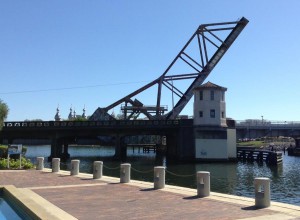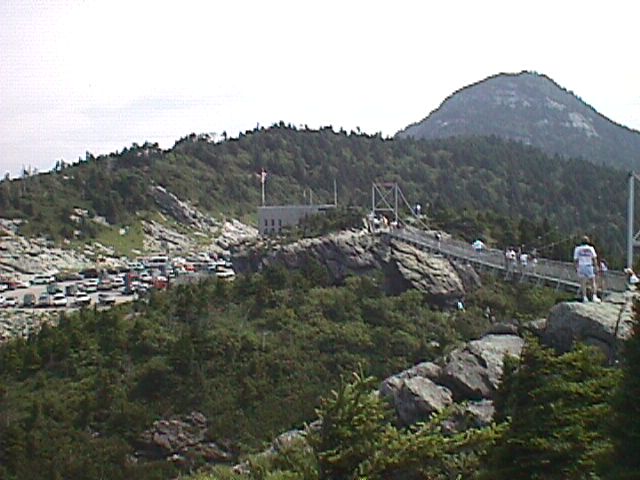There’s a looming mountain in the background, plus a bridge to walk over. Can you recognize where this is? If so, send your answer to elliott@brack.net, and be sure to include your home town.
 A native of the Florida Gulf coast, Tom Merkel of Berkeley Lakes, was first in with last week’s correct identification of the Mystery Photo. He wrote: “I believe your mystery photo is that of the Cass Street Drawbridge near the University of Tampa in Tampa Florida. I grew up in that part of Florida and spent may days on the Hillsborough River. which the bridge spans.” The photo was submitted by Susan McBrayer of Sugar Hill. Today this is part of the Tampa Riverwalk” in front of the David A. Straz Jr. Center for the Performing Arts
A native of the Florida Gulf coast, Tom Merkel of Berkeley Lakes, was first in with last week’s correct identification of the Mystery Photo. He wrote: “I believe your mystery photo is that of the Cass Street Drawbridge near the University of Tampa in Tampa Florida. I grew up in that part of Florida and spent may days on the Hillsborough River. which the bridge spans.” The photo was submitted by Susan McBrayer of Sugar Hill. Today this is part of the Tampa Riverwalk” in front of the David A. Straz Jr. Center for the Performing Arts
Another identifying the photo was Bob Foreman, Grayson. George Graf of Palmyra, Va. gave us more background on the bridge, writing: “The Cass Street Bridge is 500 feet in length and built in 1926 at a cost of $400,000. The adjacent railroad bridge, constructed in 1915, replaced a turning span railroad bridge constructed in the 1880s by James McKay for H. B. Plant, providing access to Port Tampa. Cass Street and the bridge were named after General Lewis Cass, who served as Secretary of War under President Andrew Jackson from 1831-36.
“The 1891 Tampa Bay Hotel (background with minaret looking towers), now a National Historic Landmark, is home to The University of Tampa and the Henry B. Plant Museum. During the 1880s, Henry Bradley Plant was building an empire of railroads, steamships and hotels. He wanted that empire to have a palace and that palace was the Tampa Bay Hotel – now referred to as Florida’s ‘first Magic Kingdom.’ Confederacy President Jefferson Davis’s cabinet made Plant’s company the agent for the Confederacy in collecting tariffs and transferring funds.
“In 1863, claiming a serious illness, he left his home in Augusta with a safe passage document signed by Jefferson Davis and sailed to Bermuda. After spending a month there, he traveled to Canada, Connecticut, and then to England. When in France, he was informed that his Confederate passport was not valid. After some discussion with French authorities, an unusual resolution was reached as he was issued a French passport declaring him a U.S. citizen residing in Georgia which allowed him to travel extensively across Europe and later re-enter the states when he returned to New York by way of Canada.”












Follow Us